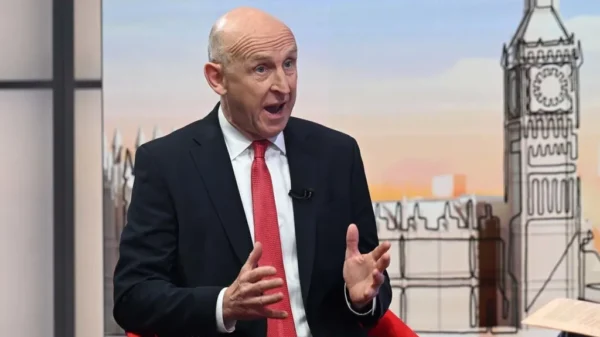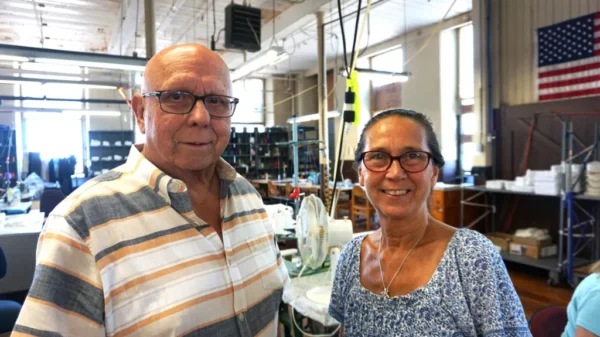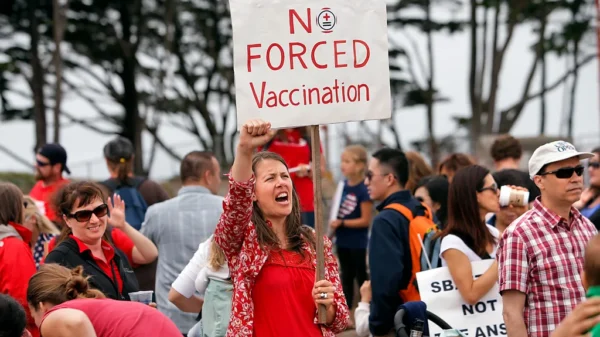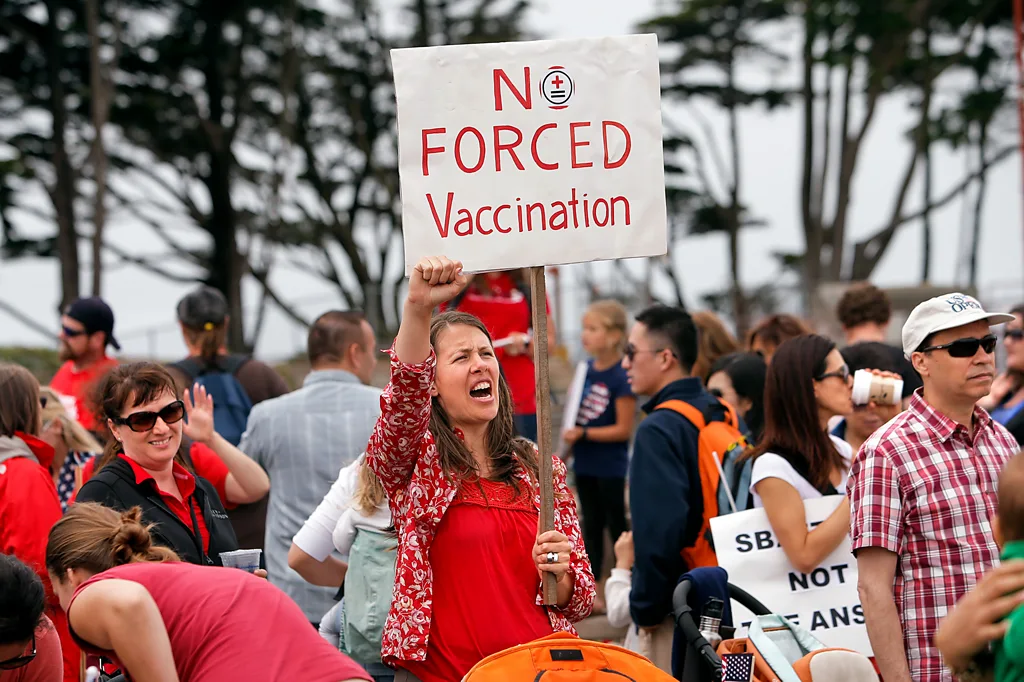Vaccine scepticism may seem like a new, growing movement. It’s probably a lot older than you think.
Since the dawn of human history, our species has been besieged by terrible viruses and deadly plagues. Smallpox, a viral disease defined by a rash of painful pustules across the body, has been one of the most lethal of all, claiming an estimated 300 million lives over the 20th century alone.
The disease killed about one-third of those it infected. Of those who survived, one-third were left blind. Almost all were scarred for life. Neither riches nor geography were shields against the disease. Among its victims were Emperor Joseph I of Austria, King Louis I of Spain, Queen Mary II of England, King Louis XV of France and Tsar Peter II of Russia. By the 1800s, smallpox was killing more than 400,000 people a year around the world.
Comment & Analysis
David Robert Grimes is an adjunct assistant professor in public health at Trinity College Dublin and author of The Irrational Ape: Why we fall for disinformation, conspiracy theory, and propaganda. His work focuses on health disinformation and conspiracy theory.
And so, when UK doctor Edward Jenner developed the first version of the smallpox vaccine in 1796, he was hopeful that he might change history. He had observed that milkmaids were curiously immune to smallpox, likely because of their prior infection by cowpox – a related, but much less dangerous, virus. To test the idea that he could confer smallpox immunity this way, he took material from a milkmaid’s cowpox sore and injected it into the arm of an eight-year-old child – an experiment that would be unacceptable by the standards of modern medical ethics. The boy proved immune to smallpox infection. Jenner named the procedure after the Latin for cow, vacca – and the first vaccine was born.
“The annihilation of the smallpox, the most dreadful scourge of the human species, must be the final result of this practice,” Jenner wrote in 1801. And he would be proved right. In 1980, after a decades-long public health campaign that included widespread vaccination, the World Health Organization (WHO) declared smallpox had been eradicated. It remains the only infectious disease where this has been achieved.
A sleugh of other vaccines have been developed against other diseases, from influenza to human papillomavirus infections that cause certain cancers and the Sars-COV-2 virus behind Covid-19. In the past 50 years, an estimated 154 million lives have been saved by vaccines, according to one recent study.
Yet, opposition to vaccines – or hesitancy about accepting them – is widespread and on the rise in many parts of the world, even percolating into the uppermost branches of governments responsible for improving public health. This week, US health secretary Robert F Kennedy Jr was quizzed by the Senate Finance Committee over his vaccine policies, resulting in fiery exchanges. On the same day, the surgeon general of Florida also announced plans to end vaccine mandates in the state. (Read more about why vaccine distrust is on the rise.)
So, is this a recent phenomenon, or has distrust in vaccines been around for as long as the jabs themselves? Why do they face protests from relatively small, but vocal, segments of the public? And how have these arguments evolved? This is a look at the long, and strange history of the anti-vax movement.
Back in the early 1800s, a series of controlled experiments by Jenner and other doctors quickly showed inoculation to be extremely effective, granting immunity against smallpox in well over 95% of those vaccinated. Public health authorities worldwide took action to roll it out. In the UK, a series of Vaccination Acts, passed in 1840, 1853 and 1871, made immunisation for children first free, then compulsory.
But almost immediately, another challenge emerged: a spate of anti-vaccination leagues sprung up around the country.
They produced pamphlets with provocative and fittingly Victorian gothic titles, like Vaccination, a Curse and Horrors of Vaccination, anti-vaccination tracts, books and even periodicals, including The Anti-Vaccinator (1869) and The Vaccination Inquirer (1879).
Think of the “anti-vaccination movement”, and you might envision the public protests, court cases or inflammatory claims about the Covid-19 vaccine. But there is a long history of protests against them, including anti-vaccine riots in 1850s England, 1880s Canada and 1890s America. In 1905 in Boston, US, vaccination opposition led to widespread protests and a Supreme Court case, which would go on to deem vaccine mandates constitutional.
Interestingly, opposition to the idea of vaccination existed even before vaccines themselves. Variolation – a precursor to modern immunisation, which used material from smallpox victims to induce a less serious reaction and immunity – was introduced in the UK and America in the 1720s.
It immediately drew the ire of critics. In a furious 1722 sermon entitled The Dangerous and Sinful Practice of Inoculation, English Reverend Edmund Massey insisted that diseases were divine retribution and punishment from God. Any measure to prevent smallpox was an inherently “diabolical operation” – one akin to naked blasphemy.
Religious opposition to vaccination was not the sole form of objection. After Jenner’s discovery of vaccination, one common trope was that immunisations should be avoided because they were “unnatural” – making vaccines the latest victim of the “appeal to nature” fallacy, a rhetorical technique that frames something as “good” by virtue of it being natural (and “bad” if it’s thought not to be). This isn’t a logical argument – arsenic, Ebola and uranium are perfectly natural but ill-advised additions to one’s breakfast cereal.
Some critics also believed that a vaccine might not just change your defences against a disease, but somehow transform your body itself. In one illustration from 1802, patients being inoculated for smallpox are shown turning into cows. This is among the origins of the “vaccines permanently alter your DNA trope”, says David Gorski, surgeon and editor of the publication Science-Based Medicine. “They didn’t know about DNA back then, obviously, but the idea that vaccines somehow change your very essence is an anti-vax trope that goes far back.”
Claims that vaccines were poisons also were common. “Better a felon’s cell than a poisoned babe” was one banner frequently unfurled at protests. Others claimed, without evidence, that vaccination was a secret ploy by doctors to enrich themselves, despite this being demonstrably false and an insult to pioneers, like Jenner, who had refused to profit off vaccines.
Many physicians of the era found themselves frustrated by the popularity of such false claims. These “falsehoods… impede the progress of the brightest discovery which has ever been made”, lamented physician John Redman Coxe in 1802.
His complaint is strikingly similar to the WHO, which observed, two centuries later: “How one addresses the anti‐vaccine movement has been a problem since the time of Jenner. The best way in the long term is to refute wrong allegations at the earliest opportunity by providing scientifically valid data. This is easier said than done, because the adversary in this game plays according to rules that are not generally those of science.”
But there were other reasons for anti-vaccine campaigning, too. One of the biggest arguments hinged on concerns about bodily autonomy and individual freedoms.
In fact, anti-vaccine leagues began as a reaction against government vaccine mandates, as well as a backlash against developments of the medical field in general, says Nobel Prize-winning vaccine scientist Peter Hotez, professor of paediatrics and molecular virology at the Baylor College of Medicine in Texas, US.
It was a “health freedom movement that began in the early 1800s as an alternative to scientific medicine”, Hotez says.
The “personal freedom” argument, in particular, seemed to be especially compelling to the residents of Stockholm, Sweden – only 40% of whom were vaccinated against smallpox in 1873, while in the rest of the country, 90% of the population was. The following year, a massive smallpox outbreak hit Sweden, leading to a death toll of 330 per 10,000 residents of Stockholm – more than 10 times the mortality rate for the rest of Sweden. In the outbreak’s wake, Stockholm saw a sharp rise in the number of people who sought out immunisations.
Many outcomes of public health improved over the 19th century. Infant and child mortality, in particular, declined dramatically. Much of this was down to the smallpox vaccine: since the virus disproportionality killed children, protection against it was transformative. The contribution of vaccination to improvements in child health has remained true in more recent times, enabling at least 40% of the reduction of infant mortality over the last 50 years.
Still, the anti-vaccine movement denied all evidence of vaccine efficacy, attributing such improvements to things like improved sanitation. In the late 1800s in Leicester, anti-vaccine campaigners insisted that quarantining and mandatory reporting – measures supposed to be used alongside vaccination – were sufficient on their own. Following an outbreak in 1894, proponents declared this strategy a triumph: 20.5 per 10,000 people in the population were infected. But they ignored the fact that healthcare workers were already vaccinated, and that children were disproportionally hit, with two-thirds of cases in Leicester afflicting children.
By contrast, London, where most of the population was vaccinated, saw far fewer children sickened or killed. Its overall measles case rate also was just one-quarter of Leicester’s, at 5.5 per 10,000.
Yet while vaccination made smallpox virtually extinct in several European countries, inequality of access to the vaccine meant that it continued to wreak havoc in poorer countries and areas under colonial rule. Killing upwards of two million people annually by the middle of the 20th Century, a concerted worldwide effort to eradicate the disease began in earnest in 1959. By 1979, sustained, global vaccination had completely eradicated the disease.
For the first time ever, a lethal virus had been confined to history books and a handful of carefully controlled samples in biohazard laboratories.
Improved understanding of immunology in the 20th Century also saw vaccinations against once-ubiquitous illnesses like polio and measles developed, saving millions of lives a year to this day. By 1994, the Americas were completely polio-free, followed by Europe in 2002.
Anti-vaccine activism did not disappear, however. Instead, the advent of the information age – particularly the internet – gave new life to some of the messages first spread 225 years ago. With the dawn of social media in the early 2000s, this only intensified. In 2018, nine in 10 UK adults said vaccines were safe and effective. In 2023, seven in 10 did.
But even people who aren’t sure whether to believe false or misleading claims about vaccines can be affected. Mere exposure to anti-vaccine conspiracy theories is a strong predictor of whether parents vaccinate their children or not. In 2019, the WHO declared vaccine hesitancy one of the world’s top 10 threats to public health.
Measles, for example, is so highly infectious that each single case leads to 12-18 additional cases, requiring over 95% of the population to be vaccinated to provide a firewall to vulnerable people and prevent outbreaks (often called “herd immunity”). In the year 2000 in the US, high vaccination compliance meant the disease was declared virtually eliminated. But since then, coverage has dropped in many communities to below herd immunity levels. A quarter of a century on, the US is battling a quickly growing number of outbreaks that have already caused the death of one unvaccinated child – the first paediatric death since 2003, and the first death from measles since 2015 – and the death of another unvaccinated adult. In July the number of reported measles cases in the US reached a 33 high.
As contemporary as the anti-vaccine movement might seem today, many of its arguments echo Victorian-era tropes – from the argument that anyone who supports vaccines is being paid off by the pharmaceutical industry, to the false claim that other public health improvements have rendered vaccines unnecessary. The popularity of these narratives, says Gorski, are a reminder of the stubborn tenacity of health misinformation. “The hesitancy and fear that lead to low vaccination rates are devilishly persistent and driven by misinformation,” he says. If these ideas continue to spread, the US measles outbreak, he says, could be just the beginning.
Source: BBC







































